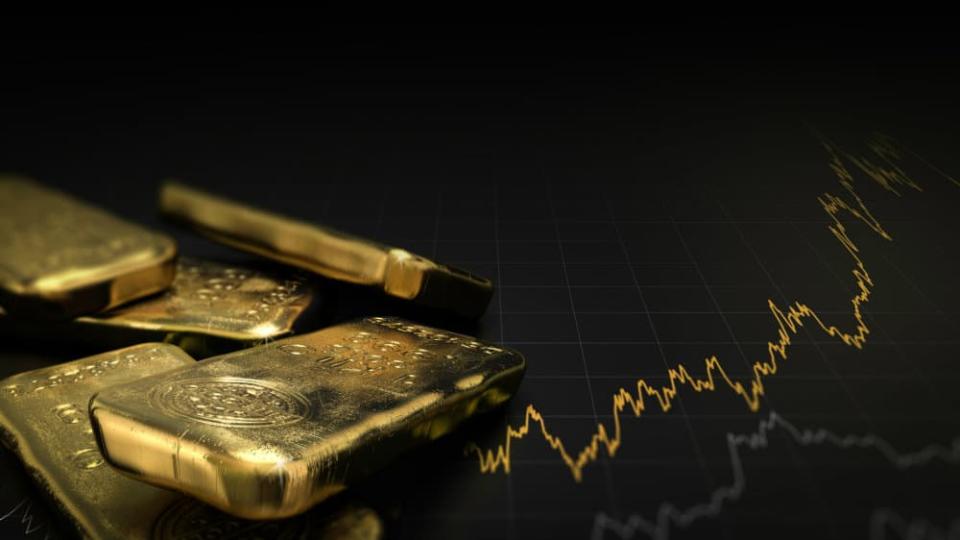Why Did This Troubled Gold Miner Soar by Over 60% in a Month?

It has been a tough time for investors in intermediate gold miner Eldorado Gold (TSX:ELD)(NYSE:EGO). The miner, which recently completed a 5:1 share consolidation, has lost 18% over the last year compared to gold, which has been flat over that period. There are signs that it won’t be plain sailing for the beaten-down miner, as it wrestles with a range of operational, geopolitical, and financial risks.
Solid full-year results
Eldorado reported some decent 2018 operational results, including beating its original annual production guidance by 6% at the upper end to have mined 349,147 gold ounces, which was also a notable 9% greater than 2017.
Nonetheless, expenses grew sharply compared to a year earlier. Cash operating costs of US$625 per gold ounce produced were a worrying 23% greater than 2017, while all-in sustaining costs (AISCs) rose by 8% to US$994 per ounce produced.
Despite receiving a higher average realized price of US$1,269 per gold ounce sold, Eldorado reported that its net loss had expanded almost 36-fold when compared to 2017 to US$362 million. The primary reason for that large net loss was a US$328 million impairment charge net of deferred tax, representing a decrease in the value of Eldorado’s Olympias and Kisladag properties.
The main concerns relating to the Olympias asset in Greece, which commenced commercial production in December 2017, is increased permitting issues and other jurisdictional risks. Those are underscored by Eldorado having to transition its Greek Skouries property to care and maintenance because of its inability to secure the required permits as well as ongoing disputes with the Greek government over the project. The inability to advance the project has been very frustrating and costly for Eldorado and its shareholders. The miner is currently seeking roughly US$855 million in damages from Athens or the costs and delays incurred with the disputes over permitting.
Eldorado completed its first gold pour at the Lamaque project in Quebec in December 2018, and it is anticipated that asset will commence commercial production by the end of the first quarter 2019. That — along with mining and heap leaching recommencing at Kisladag — will give production a solid boost.
As a result, for 2019, Eldorado projects full-year gold output of 390,000-420,000 ounces, which, at the top end of that guidance, is 20% greater than 2018. By 2020, the miner’s gold production is forecast to reach as high as 550,000 ounces. If Eldorado can achieve these projections, it will be able to generate significant cash flow and earnings, especially when it is considered that cash costs will be as low as US$550 per ounce produced during 2019 and fall to US$500 for 2020.
The miner finished 2018 with considerable liquidity holding US$292 million in cash and term deposits on face value, which means that it can continue investing capital in ramping up activity at Lamaque and exploration drilling at its operational mines. Eldorado does, however, have a worrying US$595 million in long-term debt, which is a perturbing 10 times operating cash flow. Of even greater concern is that debt falls due at the end of 2020, giving Eldorado just under two years to ensure that it has sufficient liquidity to meet that repayment.
This raised considerable alarm bells for investors when it was considered that the miner also needed to invest US$520 million in advancing its Kisladag mill project, which it suspended at the end of January 2019. That — along with its recommencing mining and heap leaching at Kisladag — will help to reduce the financial pressures that Eldorado is facing, although heap leaching is not a long-term solution, and gold production will decline sharply in 2021.
Is it time to buy Eldorado Gold?
After a troubling 2018 and a looming liquidity crunch, the outlook for Eldorado Gold has improved markedly, making it easy to understand why the market has bid it up 62% over the last month. Substantial production growth during 2019 and 2020 coupled with firmer gold will cause the miner’s earnings and cash flow to soar, giving it the opportunity to amass ample cash to meet its looming debt payment. This — along with considerable existing liquidity — should allow Eldorado Gold to reconsider the Kisladag mill project, strengthen its balance sheet, and meet its debt obligations.
Eldorado Gold isn’t out of the woods yet, but solid operational results, the improved outlook for gold, and growing lower-cost gold production all point to the miner finishing 2019 in a better position. That makes it an interesting but risky levered play for contrarian investors seeking to cash in on higher gold.
More reading
Fool contributor Matt Smith has no position in any of the stocks mentioned.
The Motley Fool’s purpose is to help the world invest, better. Click here now for your free subscription to Take Stock, The Motley Fool Canada’s free investing newsletter. Packed with stock ideas and investing advice, it is essential reading for anyone looking to build and grow their wealth in the years ahead. Motley Fool Canada 2019

 Yahoo Finance
Yahoo Finance 